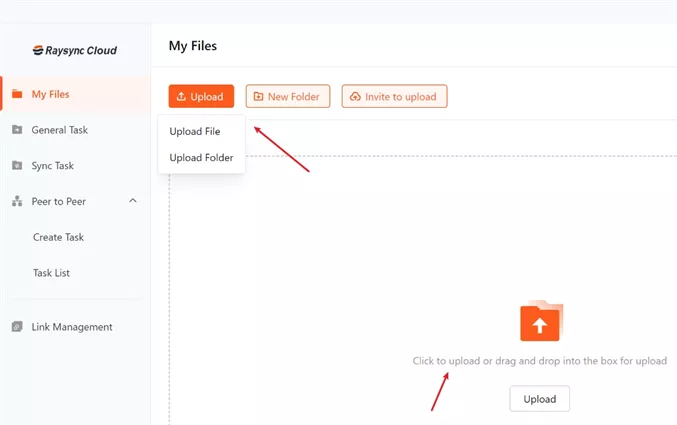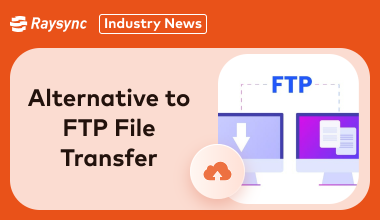List of 8 Backup Synchronization Softwares [Free/Paid]
October 16, 2024Backup synchronization software is essential for preventing data loss and streamlining file management. These tools automatically sync files across devices and create backups, eliminating the frustration of manual updates and misplaced documents.
Whether you're an individual or a business, there's a wide range of options available to fit your needs, from free basic tools to advanced enterprise solutions.
Features of Backup Synchronization Software
Synchronize software combines backup and sync functionalities to keep your data up-to-date and super safe.
Here are some of the notable features you can find:
- Automated Sync & Backup: Automatically syncs files between devices and backs them up without manual effort.
- Two-Way Sync: Ensures both source and destination folders remain identical.
- Cloud & Device Integration: Syncs across multiple platforms—cloud storage, local devices, FTP servers, and more.
- Encryption & Security: Protects your data with end-to-end encryption during transfers.
- Incremental Sync: Only updates changed files, saving time and bandwidth.
- Versioning: Allows you to restore previous versions of your files if needed.
- Cross-Platform Compatibility: Works across Windows, macOS, Linux, and mobile platforms.
These features make backup synchronization tools ideal for anyone looking to simplify file management, whether for personal use or business operations.
List of 7 Backup Synchronization Software
Here are some of the best file synchronization and backup software that you can consider to sync and backup your data.
1. FreeFileSync
FreeFileSync is one of the best file sync software designed to make file synchronization easy and fast. It's great for personal use and small projects, thanks to its user-friendly interface.

FreeFileSync focuses on efficiency by transferring only modified files during synchronization, saving time and resources. You can use it to compare files across folders, sync them, and even automate backups. Best of all, it works on Windows, macOS, and Linux.
Pros and Cons
Pros
- Free and open-source with no hidden fees.
- Batch synchronization allows syncing multiple folders simultaneously.
- Available across major operating systems.
Cons
- Limited support for cloud platforms.
- No professional customer support.
- Basic features compared to advanced tools.
Pricing Model
FreeFileSync is completely free for personal and commercial use. There are optional donations, but the tool remains open-source and accessible to all.
2. GoodSync
GoodSync is also a great backup and sync software that offers both backup and synchronization features. It supports syncing files between multiple devices, including desktops, laptops, mobile devices, and cloud services.

It also allows automated syncing, meaning you can “set it and forget it.” GoodSync works well for businesses that are in need of frequent, unattended syncs for large amounts of data.
Pros and Cons
Pros
- Supports both cloud and on-premises syncing.
- Automation reduces manual effort.
- Compatible with multiple operating systems.
Cons
- Can be expensive for business users.
- Complex interface may confuse beginners.
- Some features need an internet connection.
Pricing Model
GoodSync offers various plans
- Personal Use: $19.90/year for up to 5 devices.
- Business Use: $79.95/year per device.
- Server License: $499.95/year for server syncs.
A free trial is also available to explore its features before committing.
3. Allway Sync
Allway Sync is among the most reliable file synchronization and backup software. It’s known for its intuitive interface and versatility, supporting synchronization across multiple devices, including PCs, external drives, FTP servers, and cloud storage platforms like Google Drive and Dropbox.

The software offers bidirectional sync, ensuring that files remain consistent between two locations. Allway Sync is suitable for small businesses and freelancers who need to manage data across devices without complex configurations.
Pros and Cons
Pros
- Supports multiple platforms, including cloud services and FTP.
- Lightweight software that doesn’t slow down your system.
- Automatic sync and backup for easy file management.
Cons
- The free version has data limits.
- The interface can feel outdated.
- Limited support for large-scale enterprise use.
Pricing Model
Allway Sync offers both free and premium versions. The free version is ideal for personal use but has a 40,000-file sync limit per month. For more extensive use, the Pro version costs $25 per license, with a one-time payment model.
4. SyncBackSE
SyncBackSE is a file backup and synchronization software developed by 2BrightSparks. It caters to home users and small businesses, providing advanced sync options while being simple enough for beginners.

You can schedule backups and sync tasks to automate processes, ensuring that your data stays updated without manual intervention. One standout feature is the versioning option, which keeps previous versions of your files for easy recovery.
Pros and Cons
Pros
- Offers file versioning and detailed logs.
- Supports local, network, and FTP synchronization.
- User-friendly setup with customization options.
Cons
- Lacks integration with cloud services like Google Drive.
- The interface can feel cluttered for beginners.
- Advanced features require manual configuration.
Pricing Model
SyncBackSE offers a 30-day free trial to explore its features. After the trial, the software requires a one-time payment of $39.95 per license. Bulk discounts are available for businesses purchasing multiple licenses. SyncBack also offers premium upgrades, including SyncBackPro, with additional features like cloud integration and database support.
5. Syncovery
Syncovery is a highly customizable backup synchronization software designed for individuals and businesses that need complete control over their sync processes. It works across multiple platforms and supports synchronization with cloud services, FTP servers, and WebDAV.

One of its key features is real-time synchronization, making it ideal for users who need immediate updates across devices. It also offers encryption, ensuring data security during file transfers.
Pros and Cons
Pros
- Supports real-time synchronization.
- Works across multiple platforms, including cloud storage.
- Offers encryption for secure data transfer.
Cons
- The learning curve can be steep for beginners.
- Higher price compared to similar tools.
- Some features require manual setup.
Pricing Model
Syncovery offers a free trial to test its features. After the trial, the software costs $34.90 for personal use and $59.90 for business licenses. Syncovery also provides subscription plans for cloud services, available at an extra cost.
6. ChronoSync
ChronoSync is a macOS-exclusive free file backup synchronization software tool. It allows users to synchronize files across Mac devices, external drives, and cloud services with ease.

ChronoSync supports scheduled sync tasks, ensuring that your data is always up-to-date. It also provides file versioning and error recovery options, making it a reliable choice for those who need extra security for their backups.
Pros and Cons
Pros
- Exclusive for macOS users, seamlessly integrates with Apple devices.
- Supports file versioning and error recovery.
- Scheduled tasks for automated syncing.
Cons
- Not available for Windows or Linux.
- Higher price compared to other sync tools.
- Limited customer support outside of the Apple ecosystem.
Pricing Model
ChronoSync offers a one-time purchase license for $49.99. There are no subscription fees, and users receive lifetime updates. For advanced users, the ChronoSync Express version is available on the Mac App Store at a lower price but with limited features.
7. pureSync
pureSync is a free file backup synchronization software for Windows users.

It offers a straightforward way to keep files and folders synchronized across devices, including PCs, external drives, and network locations. The software supports both manual and automated syncs, allowing users to choose how they manage their data.
pureSync is ideal for users who need basic sync and backup functionality without extra frills. It includes features like conflict management, ensuring that no data is accidentally overwritten.
Pros and Cons
Pros
- Free to use with no hidden fees.
- Offers photo sync for cameras.
- Supports manual and automated sync options.
Cons
- Limited features compared to premium tools.
- Only available for Windows.
- Lacks cloud integration.
Pricing Model
pureSync is a free file backup synchronization software for personal and commercial use, making it an excellent choice for budget-conscious users. There are no subscriptions or premium versions, and users can access all features without restrictions.
The Ultimate Cloud Synchronization Software - Raysync Cloud
Raysync Cloud is best sync software designed for businesses that need secure and reliable data transfer.
Known for its enterprise-level capabilities, Raysync cloud provides seamless synchronization across servers, cloud storage, and remote locations, being the best sync software for external hard drive if needed by enterprise.

It offers advanced encryption protocols to ensure data security, making it the best choice for companies dealing with sensitive information.
With features like large file transfer support, Raysync Cloud makes sure your data is synced quickly, no matter the file size.
It also provides customizable sync rules to give businesses better control over their workflows.
Whether you need real-time synchronization or scheduled backups, Raysync Cloud has got you covered.
Pros and Cons
Pros
- High-speed large file transfers with no size limitations.
- Advanced encryption for secure data synchronization.
- Multi-platform support across servers, cloud, and remote devices.
- Customizable sync rules for complete workflow control.
- Real-time and scheduled syncing options for flexibility.
Cons
- First time users might take some time to get used to the software.
Pricing Model
Raysync Cloud offers multiple pricing models, including monthly and annual subscription plans tailored to business needs. The basic plan starts at around $99 per month, suitable for small teams, while enterprise plans provide custom features and priority support at higher tiers. Raysync also offers a free trial, allowing businesses to test the software before committing.
FAQS about Backup Synchronization Software
Let’s look at some frequently asked questions to better understand how backup synchronization software works and how it can benefit you.
1. What is Backup Synchronization
Backup synchronization is the process of automatically copying and updating files between devices, servers, or cloud storage. This makes sure that all versions of a file remain consistent, up-to-date, and available across different locations. Whether for personal use or large-scale business operations, backup synchronization software is a must to ensure data integrity and accessibility.
2. What is the Best Way to Synchronize Files Between Computers
To effectively synchronize files between computers, using reliable backup synchronization software is important. One of the best tools for this task is Raysync, especially for businesses. Raysync provides real-time file synchronization, so your data is always current, regardless of where it's stored.
3. What is Synchronization Software
Synchronization software is a tool designed to keep files, folders, and data consistent across multiple devices or platforms. It automatically updates changes made to a file on one device so that the updated version is reflected across all other synced devices. Backup synchronization software like Raysync offer advanced features like version control, real-time sync, and multi-user management, making it ideal for business environments.
Conclusion
For individuals, free backup synchronization tools like Allway Sync and pureSync offer a simple solution. However, businesses demanding speed, security, and the ability to handle large files should consider Raysync. It's the top choice for enterprise-level data management.
You might also like

Industry news
October 28, 2020Based on the transmission performance of UDP, Raysync breaks through the defects of traditional FTP and HTTP transmission, the transmission rate is increased by 100X, and the bandwidth utilization rate is over 96%.

Industry news
June 23, 2020In recent years, data leakage and privacy incidents have become more and more common and costly.

